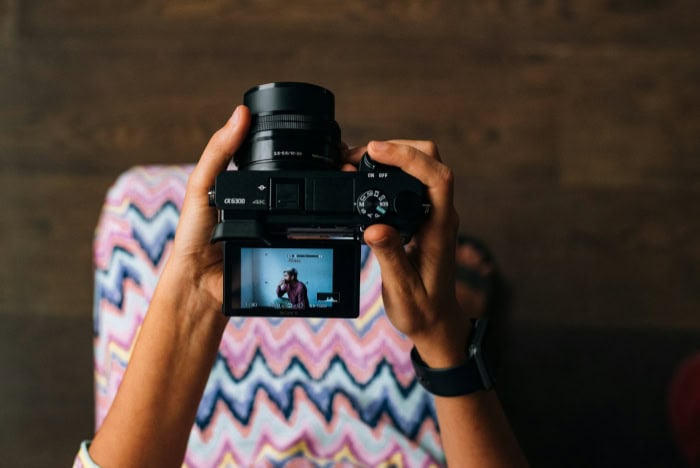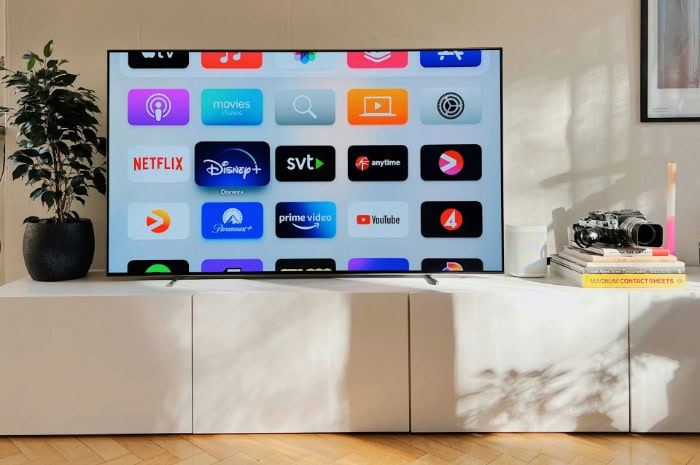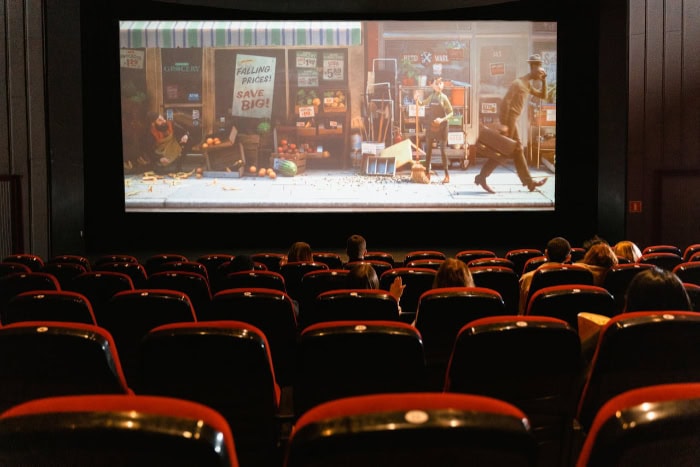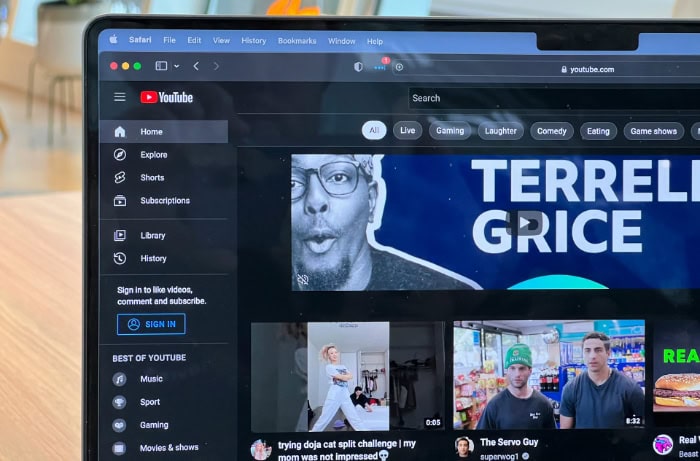4:3 vs. 16:9: Two Ratios, One Big Difference

Aspect ratios are everywhere in our daily lives, quietly shaping how we view and create media. From the screens we stream our favorite shows on to the images we capture, these simple width-to-height ratios determine the way content appears.
Among the countless aspect ratios available, 4:3 and 16:9 stand out as two of the most recognizable and influential formats.
While 4:3 evokes a sense of nostalgia, harking back to the golden age of early television and photography, 16:9 dominates modern screens, offering a cinematic and immersive viewing experience. But what makes these aspect ratios different, and why would you choose one over the other?
Understanding Aspect Ratios
In essence, an aspect ratio is expressed as a width-to-height ratio, showing how many units of width correspond to one unit of height. For instance, a 4:3 aspect ratio means that the width of the image or screen is 4 units, while its height is 3 units.
Similarly, a 16:9 aspect ratio measures 16 units wide for every 9 units of height. These numbers help standardize how visual content is displayed regardless of the actual size of the screen or medium.
Mathematically, 4:3 can also be written as 1.33:1, indicating that the width is about 1.33 times longer than the height. Meanwhile, 16:9 translates to 1.78:1, showing a wider, more stretched format compared to 4:3.
The difference might seem small in numbers, but visually, it creates a noticeable impact on how content is perceived, whether it's a classic sitcom or a cinematic blockbuster.
Visual Representation
The contrast between 4:3 and 16:9 becomes evident when you look at their shapes. 4:3 appears closer to a square, giving it a balanced vertical and horizontal dimension.
This makes it feel compact and well-suited for content where both height and width are equally important. On the other hand, 16:9 stretches horizontally, forming a wider rectangle that emphasizes horizontal space more than vertical. This widescreen format creates an experience that mirrors the natural field of vision, making it ideal for capturing expansive scenes or immersive visuals.
In practice, 4:3 might evoke the look of older TV sets or retro computer monitors, with their almost box-like appearance. In contrast, 16:9 is instantly recognizable as the shape of most modern TVs, smartphones, and laptops, designed to offer a broad and cinematic viewing experience.
Applications Across Media

Aspect ratios not only define the shape of screens but also significantly influence how media is created, shared, and consumed. Both 4:3 and 16:9 have left their marks across various forms of media, each catering to unique purposes and preferences.
Photography
Aspect ratios play an essential role in photography by affecting how subjects are framed and how viewers experience the image. The 4:3 ratio is commonly found in some digital cameras and photography styles, especially when balance between vertical and horizontal elements is needed.
This shape works particularly well for portrait photography or compositions requiring a centered, more focused subject. Its nearly square frame provides more vertical space, helping capture taller subjects or detail in environments without losing proportionality.
On the other hand, 16:9 is better suited for crafting dramatic, cinematic compositions. Its wider frame emphasizes horizontal elements, making it ideal for landscape photography where expansive scenes like sunsets, cityscapes, or panoramic views are on display.
This format allows photographers to guide the viewer's eye across the image, creating a sense of depth and immersion that is harder to achieve with 4:3.
The choice of aspect ratio in photography often depends on the mood and story the photographer wants to communicate, but both 4:3 and 16:9 have proven to be timeless tools for creative expression.
Video Production
The evolution of video production is closely tied to the dominance of aspect ratios, with 4:3 and 16:9 shaping how stories are told visually. In the early days of television, 4:3 was the standard format, reflecting the boxy shape of TV screens and early recording equipment.
Iconic shows from the mid-20th century, such as sitcoms and dramas, were all filmed in this format, giving it a nostalgic appeal that modern creators sometimes return to for retro aesthetics or stylistic choices. The square-like frame of 4:3 was practical for television broadcasts, capturing just enough of the action without unnecessary empty space.
As technology advanced, 16:9 became the preferred aspect ratio for video content, aligning perfectly with the widescreen TVs, computer monitors, and smartphones that dominate the modern era. Platforms like YouTube, Netflix, and other streaming services embraced 16:9 due to its ability to showcase videos in high definition with minimal cropping or letterboxing.
The wider dimensions allow filmmakers to create more visually impactful scenes, filling the horizontal space with movement, dialogue, and breathtaking visuals. From sweeping cinematic shots to intimate conversations, 16:9 adds a layer of immersion that has become central to contemporary storytelling.
Gaming
The gaming world provides a unique perspective on the use of aspect ratios, as they can influence not just presentation but also gameplay. Gamers who favor competitive play, particularly in older shooter titles, sometimes prefer the 4:3 aspect ratio.
This is because 4:3 provides a taller field of view, which can help highlight vertical details in the game environment, such as enemies or objectives above or below the player's position. The compact and focused display of 4:3 also aligns with older monitors and graphics settings, making it a nostalgic choice for those who enjoy retro or classic gaming experiences.
In contrast, 16:9 dominates modern gaming, especially in open-world and cinematic titles. Its widescreen format aligns with the immersive nature of these games, allowing players to better appreciate expansive landscapes and detailed environments.
From exploring distant mountains in adventure games to experiencing fast-paced action in racing or sports titles, 16:9 enhances the player's sense of being part of the virtual world. Game developers design their titles with this aspect ratio in mind, ensuring that everything from character animations to HUDs (heads-up displays) fits seamlessly into the frame.
Presentations and Business Use
Aspect ratios are also critical in professional settings, particularly for presentations where visuals are key to communication. In earlier years, 4:3 was the dominant ratio for projectors and presentation slides, matching the shape of older monitors and ensuring compatibility with standard software.
Its nearly square frame was well-suited for simple layouts and evenly distributed text.
However, as presentation tools and technologies evolved, 16:9 became the preferred format in business and academic environments. Modern projectors, widescreen displays, and laptops are all designed with 16:9 in mind, making it the easier choice for creating and displaying slides.
The wider frame accommodates more content, such as larger charts or multiple bullet points, while reducing visual clutter. This format also ensures a more polished, contemporary look, especially when presenting videos or high-resolution images.
While 4:3 is still compatible with older systems, 16:9 has become the de facto choice for presentations, offering a seamless and visually appealing experience for both presenters and audiences. Whether it's a classroom lecture or a corporate pitch, the right aspect ratio enhances the effectiveness of communication.
Benefits and Challenges

Aspect ratios have a direct impact on how content is displayed, created, and consumed. Both 4:3 and 16:9 offer unique advantages based on their structure, but they also come with specific limitations.
By adapting to different uses and technologies, these ratios have evolved to suit diverse needs, whether it’s preserving legacy formats or embracing modern standards.
Advantages of 4:3
One of the strongest advantages of the 4:3 aspect ratio is the additional vertical space it provides. This makes it particularly useful for tasks where height plays a significant role in productivity and visibility.
For instance, when coding or reading, the taller frame accommodates more lines of text or code, reducing the need to scroll frequently. Similarly, retro gaming benefits from this ratio, as many classic games were originally designed with 4:3 displays in mind.
Playing those games on a 4:3 screen ensures an authentic experience, preserving the intended visual style and format.
Compatibility is another significant strength of 4:3. Older devices, such as traditional CRT televisions, early computer monitors, and video cameras, all adhered to this aspect ratio.
Films, shows, and photographs created during these periods were designed to fit within the 4:3 frame. Even today, this ratio remains a practical choice for anyone working with legacy media or engaging in activities that benefit from a more vertically balanced display.
Advantages of 16:9
The widescreen format of 16:9 is unmatched when it comes to creating immersive experiences. Its broader frame closely matches the human field of vision, making it the ideal aspect ratio for watching movies, streaming videos, or playing modern games.
The width allows for stunning visuals where horizontal space is emphasized, creating a sense of vastness in epic landscapes or action-packed scenes. For home entertainment systems, 16:9 has become the default, ensuring that content looks natural and seamless without the need for excessive adjustments.
Another advantage lies in its compatibility with high-definition resolutions. Modern resolutions like Full HD (1920×1080) and 4K (3840×2160) are perfectly aligned with the 16:9 format, ensuring that content can be delivered with maximum clarity and quality.
This has made 16:9 the standard not just for entertainment but also for professional content, video editing, and even live-streaming platforms that prioritize sharpness and accessibility. Its design ensures that creators and audiences alike benefit from a versatile, universally accepted format.
Challenges with Each Ratio
While both 4:3 and 16:9 offer considerable benefits, they also come with challenges that can affect the viewing or editing experience. One common issue arises when content does not match the screen’s aspect ratio. For instance, if 4:3 content is displayed on a 16:9 screen, vertical black bars appear on the sides, a phenomenon known as pillarboxing.
Similarly, when 16:9 content is viewed on a 4:3 screen, horizontal black bars, or letterboxing, may appear at the top and bottom. These visual gaps can interrupt the viewing experience and make the content feel less cohesive.
Resizing content to fit a different aspect ratio can also lead to cropping or distortion. For example, adapting a 4:3 video to fill a 16:9 screen might result in parts of the image being cut off, losing important visual details.
Conversely, stretching an image or video designed for 4:3 into 16:9 can make it look unnaturally elongated, reducing its overall quality. These challenges highlight the importance of working within the native aspect ratio of the content whenever possible to retain its intended presentation.
Aspect ratios are as much about balance as they are about compatibility. While 4:3 thrives in tasks and media that prioritize verticality, and 16:9 excels in delivering an immersive widescreen experience, both face constraints when forced outside their natural contexts.
Why Has 16:9 Become the Standard?

The rise of 16:9 as the dominant aspect ratio represents a blend of technological innovation, shifting consumer habits, and industry-wide standardization. What began as an alternative to 4:3 quickly transformed into the universal format for modern media, from televisions to smartphones.
Its ascent wasn’t accidental—it was driven by a need to align content creation and consumption with newer technologies and viewing preferences.
Technological Advancements
The widespread adoption of 16:9 owes much to the surge of HDTVs and widescreen monitors. As consumers demanded higher-quality visuals, traditional 4:3 televisions, limited by their lower resolution, were gradually replaced by HD-capable screens.
The 16:9 format was inherently better suited to support these higher resolutions, such as 720p, 1080p, and later 4K. It offered a wider canvas for content without sacrificing clarity, allowing video producers and broadcasters to fully utilize the increased pixel count.
The rise of flat-screen technology further cemented the role of 16:9. Unlike bulky CRT displays, which were constrained by the physics of their design, flat-screen televisions and monitors benefited from the sleek, wide aesthetic of 16:9.
This format not only enhanced the viewing experience but also allowed manufacturers to produce thinner, more space-efficient devices. The combination of visual quality and physical practicality made 16:9 the natural choice for the next wave of display technology.
Consumer Preferences
Changing consumer tastes also played a critical role in the shift to 16:9. With audiences craving cinematic experiences at home, the widescreen format became an essential feature of televisions and media devices.
Its horizontal orientation closely mirrors the aspect ratio used in theaters, making it ideal for watching movies and other widescreen productions. The ability to replicate the immersive feel of a cinema screen in the living room resonated strongly with viewers, fundamentally altering expectations for home entertainment.
Streaming platforms further amplified the demand for 16:9. Services like Netflix, YouTube, and Hulu optimized their video delivery for widescreen displays, ensuring that most modern content fit seamlessly into this format.
As consumers embraced these platforms, devices that supported 16:9 naturally became the preferred choice, reinforcing the ratio’s dominance in the media landscape. The wide field of view also made multitasking on devices such as laptops and tablets more convenient, adding even more appeal to the format.
Choosing the Right Aspect Ratio

Selecting the appropriate aspect ratio depends heavily on the intended use, whether for consuming or creating media. Different formats serve distinct purposes, so the decision often revolves around balancing aesthetic needs, platform requirements, and the type of content being worked with.
While modern devices largely default to 16:9, there are still occasions where 4:3 offers advantages, especially for niche applications or legacy content.
Considerations for Media Consumption
For media consumption, the choice of aspect ratio can shape the overall experience. Watching movies or streaming modern shows is almost always optimized for 16:9.
This widescreen format aligns with the intended framing of contemporary cinematic productions, offering an immersive experience with minimal black bars or letterboxing. Similarly, most platforms like Netflix, YouTube, and gaming consoles are tailored to fit seamlessly into 16:9, ensuring that the content appears exactly as creators intended.
However, watching older television shows or movies might favor a 4:3 display. Classics from television’s early days were filmed with this aspect ratio in mind, and viewing them on a 4:3 screen preserves the original structure without the distraction of black bars on the sides.
Retro gaming also benefits from this ratio, as many classic titles were designed for 4:3 monitors. For gamers who enjoy nostalgic experiences, matching the original format creates a more authentic environment.
When it comes to gaming on newer platforms, 16:9 is typically the better option. The wider format provides a broader field of view, especially in open-world or first-person games.
The additional screen real estate allows for greater immersion and better visibility of the environment, which can make a significant difference in competitive or exploration-based gameplay.
Considerations for Media Creation
Choosing the correct aspect ratio for content creation often hinges on the platforms where the final product will be shared. For video creators, 16:9 is the default for platforms like YouTube and most social media services that host widescreen content.
Its widescreen dimensions not only look modern but also accommodate high-definition resolutions, allowing creators to take full advantage of current technology.
On the other hand, creating content for platforms that prioritize vertical formats calls for different ratios. For example, Instagram stories, TikTok, and reels are best suited to vertical or square frames, formats closer to 9:16 or 1:1 rather than either 4:3 or 16:9.
However, for photographers and editors working with traditional photographs or creating content with a retro aesthetic, 4:3 remains a popular choice. Its balanced proportions produce images that retain a classic, focused feel, ideal for certain styles of portraiture or minimalist designs.
For editors working on legacy material, maintaining the original aspect ratio is often the best approach. For instance, upscaling 4:3 content to fit a 16:9 frame may result in cropping or distorting the source material.
Staying true to its native format ensures that the integrity of the visual is preserved.
Conclusion
Aspect ratios like 4:3 and 16:9 shape how we view and create media, each offering its own strengths and challenges. While 4:3 provides a sense of nostalgia and excels in tasks where vertical space is valuable, 16:9 dominates modern entertainment and technology with its immersive widescreen appeal and compatibility with high-definition resolutions.
The choice between the two often comes down to the type of content, the device being used, and the context in which it will be consumed or created.
Both aspect ratios continue to hold relevance in their own ways. Whether preserving the authenticity of older media with 4:3 or embracing the broad versatility of 16:9, each format has its place in shaping today’s visual experiences.


